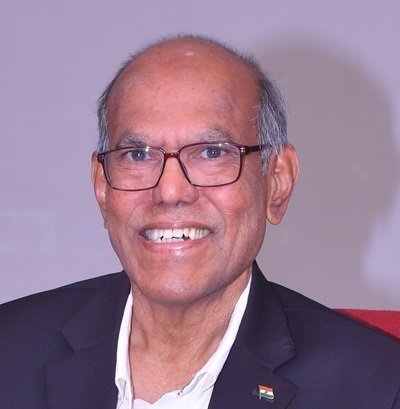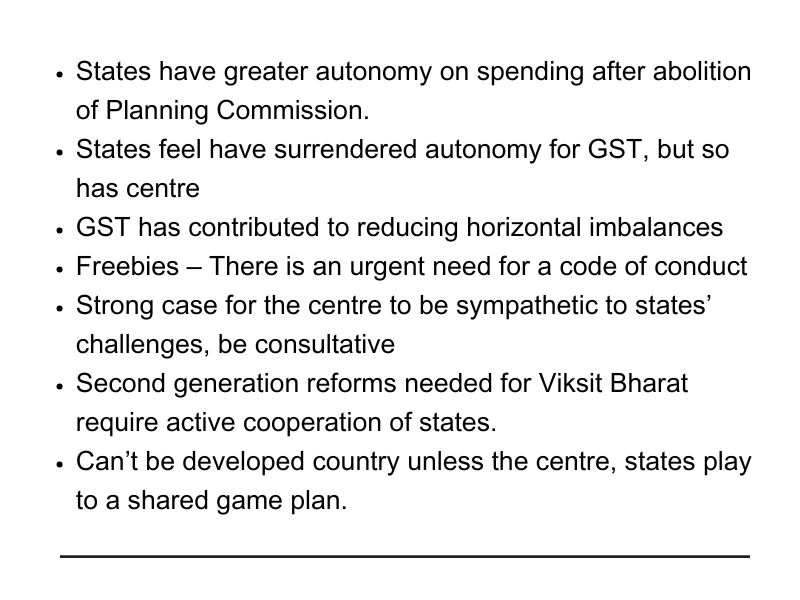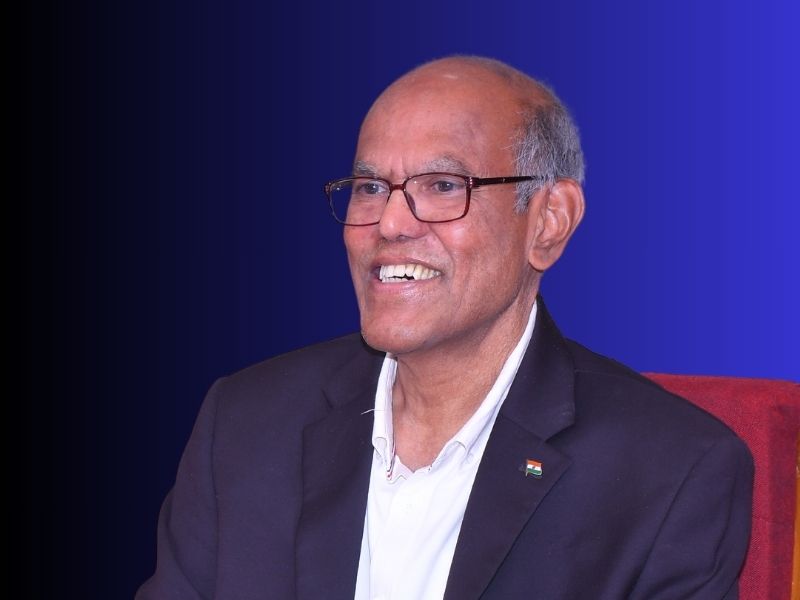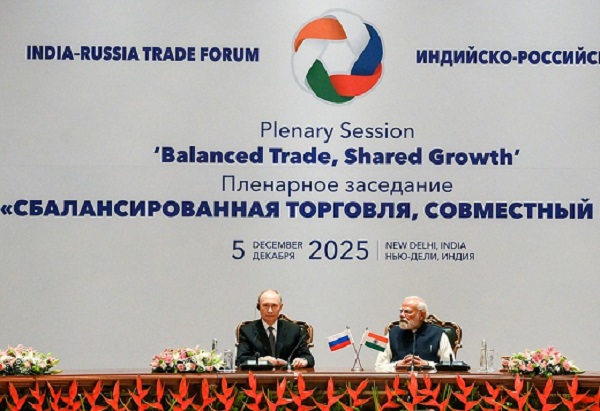.png)

Duvvuri Subbarao, ex-RBI Governor, is a thought leader on monetary policy and governance, shaping India's financial discourse.
January 31, 2025 at 2:57 AM IST

There are three phases of India’s federalism.
In order to appreciate those issues in context, it may be instructive to have a broad idea of the evolution of our political and economic decentralisation since Independence. That evolution can be divided into three broad phases.
Docile Federalism
The first phase covering the quarter century after independence – from 1947 up until the early 1970s – can be termed as docile federalism characterized by virtually total central dominance of the political and economic space.
On the political dimension, the centre and states were ruled by a single party – the Congress. Pandit Nehru who was prime mister was seen as a national figure rather that a party head or a political personality.
On the economic dimension, the centre had near total command over resource generation and deployment. Much of centre state resource transfers took place via the Planning Commission with the centre having an overriding say on how much each state got and how the funds were spent. The Finance Commission whose transfers are formula driven was a relatively minor player. Much of the investment was in the public sector with the centre deciding where and when to invest. Through the licence control regime, the centre decided even where and when the private sector should invest and what and how much they should produce.
Cooperative Federalism
The second phase – running from the early 1970s till the mid-1990s – shaped largely by socialist philosophy - can be seen as a period of cooperative federalism. On the political dimension, regional parties started springing up and gaining political power. The Centre resorted frequently to Article 356 of the Constitution to dismiss state governments which caused friction between the centre and states.
Even as the political space got more contentious, the economic space was defined largely by cooperation. Socialist philosophy ruled. There was widely shared endorsement for supporting backward states and underdeveloped regions through fiscal support and public and private investment.
On the political dimension, regional parties came into their own and had become big players in the national political space. Not only did they come into power at the state level but had begun to have influence at the centre.
Combative Federalism
The third phase starting from mid-1990s to date can be seen as period of combative federalism with both the political and economic space getting more contentious, and on occasion even corrosive. This has been a period when the blitzkrieg economic reforms of the early 1990s had taken root and the 73rd and 74th amendments to the Constitution were instituted giving constitutional status to the third tier of decentralization.
On the political dimension, regional parties came into their own and had become big players in the national political space. Not only did they come into power at the state level but had begun to have influence at the centre.
The United Front governments of Deve Gowda and Gujral were coalitions of largely regional parties. Subsequent UPA and NDA governments too had regional parties as coalition partners and on occasion depended on their support for parliamentary majority as is the case currently with the NDA III government.
The growing political clout of states also transcended into the economic space. The ability of the centre to dispense patronage though resource transfers has diminished if not disappeared. Public investment via public enterprises has virtually stopped. Private investment stands delicenced. The Planning Commission has been abolished. Private players have come into the financial sector. Much of central resource transfers currently take place via the Finance Commission route which are entirely formula driven with little scope for subjectivity or for dispensing political patronage.
The net result is that today, both the political and economic space have got more combative.
States’ Version
A broad narrative that has emerged out of this combative federalism, largely shaped by states, is that the terms of our fiscal federalism are loaded against states.
This contention of states can broadly be stylized as follows: (i) Our expenditure responsibilities are larger than the resources we can generate on our own. (ii) The centre does not give us sufficient resources to bridge the gap between our resources and expenditure responsibilities. (iii) Moreover, we do not have full autonomy on how to spend the money that the centre gives us. (iv) Furthermore, the centre even controls how much we borrow and from whom.
This contention of states is debatable.
The principle of subsidiarity guides both taxation and expenditure in an economy. Elastic taxes are best assigned to the central government to prevent a race to the bottom, ensuring stable revenue collection. Meanwhile, expenditure responsibilities should be decentralised to the lowest level that can efficiently deliver services, allowing for greater accountability and responsiveness.
Big Picture
In order to analyse the state’s contention that the terms of our fiscal federalism are loaded against them, let us look at the big picture first.
The Constitution clearly lays down the taxation powers and expenditure responsibilities of the centre and states. This was done with much thought and is consistent with the principle of subsidiarity.
The principle of subsidiarity says that more elastic taxes should be assigned to the apex level of government and less elastic taxes to subnational levels. Imagine for the sake of argument that states had control of elastic taxes. That would likely set off a race to the bottom as states would compete with one another to reduce the tax rates to attract economic activity. Economic activity would then gravitate to the low tax regimes with the result that the total tax take at an economy level would be sub-optimal.
Similarly the principle of subsidiarity lays down that expenditure responsibilities should be decentralized to the lowest level of government at which they can be efficiently delivered. The rationale is that such decentralization makes it possible for the end user to demand accountability for service delivery.
The Constitutional division of taxation and expenditure responsibilities between the centre and states is therefore an efficient arrangement. It assigns elastic taxes such as income tax, corporate tax, central excise and customs to the centre and less elastic taxes such as sales tax, excise duty on alcohol, motor vehicle tax, stamp duty and registration fee to the states. Similarly while the centre has responsibility for national defence and external relations, much of expenditure responsibilities that impact people’s everyday lives such as education, health, law and order are assigned to states.
When this Constitutional arrangement was summed up, it was realized that there was a structural imbalance – a gap - between the taxation powers and expenditure responsibilities of states. The Constitution therefore provides for the centre to devolve a portion of its tax take to the states to bridge the gap. In particular, it prescribes the appointment of a Finance Commission every five years to make recommendations on how much of its tax pool the centre should give away to states (vertical share) and how that shareable pool should be apportioned among states (horizontal share). There is also a provision for the Finance Commission to recommend central grants to states (conditional or unconditional) in addition to tax devolution.
Over the years, several other routes of central resource transfer to states, beyond the Finance Commission, had evolved. The most important, and by far the most substantial, of these was the scheme of plan loans and grants to states as determined by the erstwhile Planning Commission.
The centre also designed an extensive programme of Centrally Sponsored Schemes (CSS) aimed at pushing spending on national priorities. Under the CSS, the centre gives funds to states to spend on schemes such as for example mid-day meals in schools, malaria eradication or employment guarantee.
The 60:40 Picture
When all of central transfers to states via all routes are summed up, ballpark estimates indicate that the centre collects about 60 per cent of the combined revenue (centre and states together), but gets to spend only about 40 per cent of the combined expenditure. This asymmetry is mirrored on the states’ side. Together, they collect 40 per cent of the combined revenue, but have the pleasure of spending as much as 60 per cent of the combined expenditure.
Loaded against States?
With that big picture in mind, let us return to the states’ contention that the arrangements of our fiscal federalism are loaded against them. I will argue, if only for the sake of debate, that our fiscal federal arrangements are not only not loaded against states, but that over time, they have in fact been shifting in favour of states.
Centre and State Expenditure Shares
Take first the expenditure share of states – around 60% - in the total general government expenditure. That share is larger than that in many other federal countries: Brazil 40.2%; Indonesia 37.9%; US and Australia: around 40%, evidencing that Indian states enjoy more spending power, and thereby more political clout, than their counterparts in many other federations. Also, that spending share has in fact been shifting in their favour. Over the five year period 2015-20, states’ average share in total government expenditure was 63.9%. In some sense, it can be argued that states are having the pleasure of spending without the pain of taxation.
Tax Devolution
Consider tax devolution – vertical sharing – that is determined by the Finance Commission. As per the original Constitutional mandate, states were entitled to a share in just two central taxes - personal income tax and union excise duties. States argued that this was unfair and that they should get a share in the total tax pool of the centre so that they get to benefit from the overall buoyancy of central taxes. This demand was conceded through a Constitutional amendment in the year 2000 giving them a share in the total taxes collected by the centre.
Larger Autonomy
By way of autonomy, the abolition of the Planning Commission in 2014 tilted the centre-state fiscal balance in favour of the latter. Under the earlier Planning Commission arrangement, states had to seek the approval of the centre for their state plans and it was the centre that decided on the allocation of loans and grants to each state for funding its plan. That balance has now changed. Now states get that money as part of statutory transfers via the Finance Commission route with full discretion over where and how to spend it.
What this cumulatively means is that not only do states get a larger share of central resources but have greater autonomy in deciding how to spend it.
Grants to Local Bodies
After the 73rd and 74th amendments to the Constitution in 1993 giving Constitutional status to local bodies, it was expected that states would devolve funds to their local bodies along a scheme that mimics the centre-state resource transfers via the Finance Commission. Disappointingly, most states failed in this regard. In order to make up for this, the Finance Commission has started making special devolution by way of grants to states for onward transfer to local bodies. These devolutions are over and above what states get as their own share from the Centre. The share of these local body grants in the tax devolution to states has gone up from 2.6% (10th Finance Commission 1995-2000) to 10.1% (15th Finance Commission 2021-26) evidencing the growing obligation the Centre is taking on.
Centrally-Sponsored Schemes
Centrally Sponsored Schemes (CSS) have been another point of centre-state friction. States chafe at the straitjacketed nature of CSS funding and see it as an assault on their autonomy. Their standard refrain: ‘Give us the money and we will decide how to spend it. Being closer to the frontline, we know the local priorities better.’ A neat argument in theory, but far from credible in practice given how several states have often diverted CSS funds for other purposes including, at times, for meeting their salary bills.
The argument that the centre is using the CSS as a mechanism to wade into subjects assigned to states under the Constitution is also misinformed. CSS monies are given to states invoking the provisions of Article 282 of the Constitution. The very intent of Article 282 is to enable both the centre and states to spend on any public purpose no matter that the purpose is beyond its normal legislative responsibilities. The centre uses CSS to signal national priorities, and that is entirely consistent with not just the letter but also the spirit of the Constitution.
GST
The implementation of GST has become another faultline in our fiscal federalism. States have tended to see the GST as a central initiative in aid of which they have been forced to make compromises. This is short-sighted. For sure, states have surrendered some of their autonomy in raising taxes, but so has the centre. Since the GST rates are decided by the GST Council, every state cannot get its way on every rate; some give and take is inevitable in a national project like this.
There is already sufficient evidence that the GST has lived up to its promise. RBI analysis (RBI Report on State Finances 2024-25) shows that the average buoyancy of states’ own tax revenue increased from 0.86 (2012-20) to 1.44 in the post pandemic period (2021-25), mainly driven by robust growth in the State Goods and Services Tax (SGST). Interestingly, states with a history of a low tax-GSDP ratios have witnessed larger buoyancy than others showing that the GST has contributed to reducing horizontal imbalances.
Limits on Borrowing
What rankles states most of all about our fiscal federalism is the limits on their borrowing. As per Article 293 of the Constitution, a state cannot raise any loan without the centre’s permission as long as it has outstanding debt owed to the centre. The Article also allows the centre to impose conditions on a state while giving its consent for borrowing. States see this as an assault on their sovereignty and an avenue for the centre to play politics. Recently, the Government of Kerala has, in an unprecedented move, agitated this issue before the Supreme Court.
It is important to see this issue in a larger and apolitical perspective. First, Indian states enjoy more freedom in borrowing than sub-national units in many other countries. In the US for example, states are required to balance their budgets; they are allowed to borrow only for capital projects.
Second, states are able to borrow at lower rates than they would command based on their fiscal position because the market assumes that their loans are guaranteed by the centre although there is no such guarantee. Third, the centre has not so far invoked the authority given to it by the Constitution to place any conditions while giving its consent to states to borrow.
India is one fiscal entity. Fiscal profligacy in any state can impair the fiscal health and hence the creditworthiness of every other state and of the centre. It is this spillover impact that is the rationale for external restraint on states borrowing.
Centre’s Responsibility
Even as there is no case for states to believe that the terms of our fiscal federalism are loaded against them, I want to assert that there is a strong case for the centre to show greater sympathy for the states’ fiscal challenges and also be more consultative. Let me illustrate this with just a couple of examples.
Take the practice by the centre of increasingly resorting to levy of cesses and surcharges rather than raising taxes. There is a perverse incentive in operation here. If the centre’s objective is to garner more resources, the straight forward option is to raise taxes, but if the centre does that, it has to part with 41 paise out of every additional rupee to states. On the other hand, if it raises the additional rupee by way of a surcharge, it gets to keep all of it.
When the Constitution was amended in the year 2000 giving states a share in the centre’s total tax pool, the implicit understanding was that the centre will resort only sparingly to cesses and surcharges, and not as a matter of routine as has become the practice. RBI analysis shows that due to increases in cess and surcharges, the divisible pool has shrunk from 88.6% of the centre’s gross tax revenue in 2011-12 to 78.9% in 2021-22, offsetting much of the benefits of the increase in tax devolution recommended by the Fourteenth Finance Commission.
States feel aggrieved that they are being cheated out of their legitimate share of national tax revenue. The centre on the other hand argues that these levies are being used to fund transfers to local bodies. There is a strong case for more consultation and greater transparency here. Perhaps a formula based ceiling on how much the centre can raise by way of cesses surcharges?
Another area where the centre should be more consultative is the CSS. I have argued earlier that the central initiative on CSS is not only unobjectionable but even desirable. Nevertheless, there is a strong case for the centre to consult states on the design of the schemes and to periodically review them so as to make the spending more geared to states needs and priorities.
Given fiscal constraints and better uses for public funds, the Centre must engage states and political parties in a broad consultation to curb freebies. A workable formula is essential for long-term fiscal sustainability.
Freebies Issue
There is also a strong case for the centre to take leadership on the freebies issue. Virtually all political parties are guilty on this count, some possibly more than others. In a poor country where millions struggle to make a decent livelihood, transfer payments to the most vulnerable groups are necessary, indeed even mandatory. But competitive populism like what is unfolding of late is fiscally perilous, possibly even inimical to our long-term growth and welfare.
Freebies have an opportunity cost. The money spent on them could be spent, for example, on roads, education and health which arguably would aid growth and welfare on a more sustainable basis than would mere handouts. As Mao said, ‘Give a man a fish, and you feed him for a day. Teach him to fish, and you feed him for a lifetime.’
Some time ago, the prime minister decried the revadi culture but disappointingly, he has not followed up on that. I am conscious that given the dynamics of our vigorous democracy, freebies are an intensely political issue. But considering the fiscal challenges and the more productive alternatives that same money can be put to, the centre must launch a broad based consultation with all states and all political parties to reach a workable formula for restraining freebies. This is necessary for fiscal sustainability.
Consultation Platform
The erstwhile Planning Commission used to provide a platform for centre-state consultation. The successor body – the Niti Aayog – has continued the practice of organizing a similar meeting.
Historically, these meetings did not have any measurable impact on policy formulation. Chief ministers typically read out prepared scripts, those belonging to opposition parties chastised the central government for their step-motherly attitude towards them, some chief ministers boycotted the meetings or walked out mid-way to make a political statement. These meetings degenerated into speech shops and were gone through more to tick a box rather than improving centre-state relations.
We need a different, and a different type of, platform for centre-state consultation in an apolitical, non-adversarial, non-confrontational context. The meetings should be organized around a specific and limited agenda, all prepared statements should be taken as read, the discussion should be businesslike and result oriented to iron out differences and arrive at a consensus.
Viksit Bharat - Cooperation
I have so far argued that there is no case for the states to believe that our fiscal federal arrangements are biased against them. I have also argued that there is nevertheless a case for the centre to be more sympathetic to the fiscal challenges of states.
Let me now conclude.
We want to be a developed country by the time of the centenary of our Independence in 2047 – Viksit Bharat. The agenda for getting there is large, complex and also familiar. This is not the occasion to go into those details. But I want to emphasize that we cannot become a developed country unless the centre and states play according to a shared game plan.
That game plan has to include implementation of second generation reforms aimed at improving the productivity in the economy. The first generation reforms of the 1990s focussing on liberalizing investment, trade and finance could be implemented by the centre without consulting the states because they fell within the domain of the centre. The second generation reforms we now have to implement focussing mainly on factor markets – land, labour, taxation- require not just the consent but the active cooperation and involvement of states.
Centre state cooperation is more vital than ever before.
*Former Reserve Bank of India Governor Duvvuri Subbarao delivered the third B.P.R. Vithal Memorial Lecture in Hyderabad on Jan 30, acknowledging Vithal as one of his mentors. This is an edited excerpt from his address.




